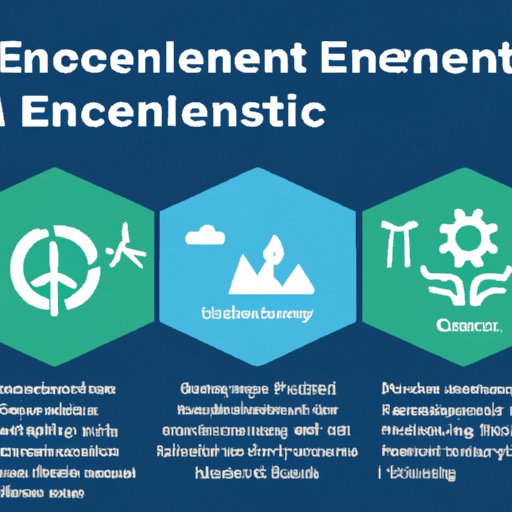Introduction
Environmental science is an interdisciplinary field that focuses on understanding the natural world and its interactions with humans. It combines elements from many different disciplines, including biology, chemistry, physics, geology, oceanography, and ecology. In high school, environmental science courses provide students with a comprehensive overview of the various aspects of environmental science and how they are related to each other.

Exploring the Core Principles of Environmental Science
The core principles of environmental science involve understanding the scientific method and its application to environmental science, the fundamentals of ecology, and the fundamental principles of conservation. Students will learn about the scientific method and how it can be applied to environmental studies, such as studying the effects of human activities on the environment or investigating the effects of climate change. They will also explore the fundamentals of ecology, which includes examining the relationships between living organisms and their environments.
In addition, students will examine the fundamental principles of conservation, which include understanding the importance of preserving biodiversity, protecting ecosystems, and understanding the need for sustainable development. These principles are essential for ensuring a healthy environment for future generations.
Examining Environmental Issues and Challenges
Environmental science courses in high school also cover global environmental issues and challenges. Students will explore the causes and effects of global warming, air pollution, water pollution, and land degradation. They will also investigate the effects of population growth, consumption, and waste on the environment, as well as the impacts of human activities on the environment.
Students will also investigate the effects of climate change, including rising sea levels, extreme weather events, and changes in ocean currents. Additionally, they will explore the impacts of deforestation, species extinction, and acid rain. All of these topics will help students gain an understanding of the interconnectedness of nature and the importance of preserving the environment.

Investigating Solutions to Global Warming
Environmental science courses in high school also cover solutions to global warming. Students will investigate renewable energy sources, such as solar, wind, and hydro power, as well as carbon capture and storage technologies. They will also explore ways to reduce greenhouse gas emissions, such as through increasing energy efficiency and reducing fossil fuel use. Additionally, students will examine the potential for green technology, such as electric vehicles and smart grids, to reduce our dependence on fossil fuels.
Understanding Human Impacts on the Environment
High school environmental science courses also cover the impacts of human activity on the environment. Students will explore the impacts of population growth, consumption, and waste on the environment. They will investigate the effects of air, water, and land pollution, as well as the consequences of deforestation, species extinction, and acid rain. By studying these topics, students will gain an understanding of the interconnectedness of nature and the need for conservation efforts.
Investigating the Interconnectedness of Nature
High school environmental science courses also explore the interconnectedness of nature. Students will examine the effects of biodiversity loss, as well as the importance of conservation efforts. They will investigate the role of wildlife corridors and protected areas in preserving ecosystems, and they will learn about the importance of preserving habitats for endangered species. Additionally, they will explore the effects of climate change on ecosystems and the need for adaptive management strategies to ensure the health of the environment.

Applying Sustainability Practices in Everyday Life
Finally, environmental science courses in high school will explore ways to apply sustainability practices in everyday life. Students will investigate ways to reduce energy use, such as by using energy-efficient appliances, switching to LED light bulbs, and utilizing natural lighting. They will also explore ways to reduce waste, such as by composting, recycling, and reusing. Additionally, they will examine the potential for green technology, such as electric vehicles and smart grids, to reduce our dependence on fossil fuels.
Conclusion
High school environmental science courses provide students with a comprehensive overview of the various aspects of environmental science and how they are related to each other. Students learn about the core principles of environmental science, as well as global environmental issues and challenges. They investigate solutions to global warming, understand the impacts of human activity on the environment, explore the interconnectedness of nature, and apply sustainability practices in everyday life. Through these courses, students gain the knowledge and skills necessary to become responsible stewards of the environment.
(Note: Is this article not meeting your expectations? Do you have knowledge or insights to share? Unlock new opportunities and expand your reach by joining our authors team. Click Registration to join us and share your expertise with our readers.)
